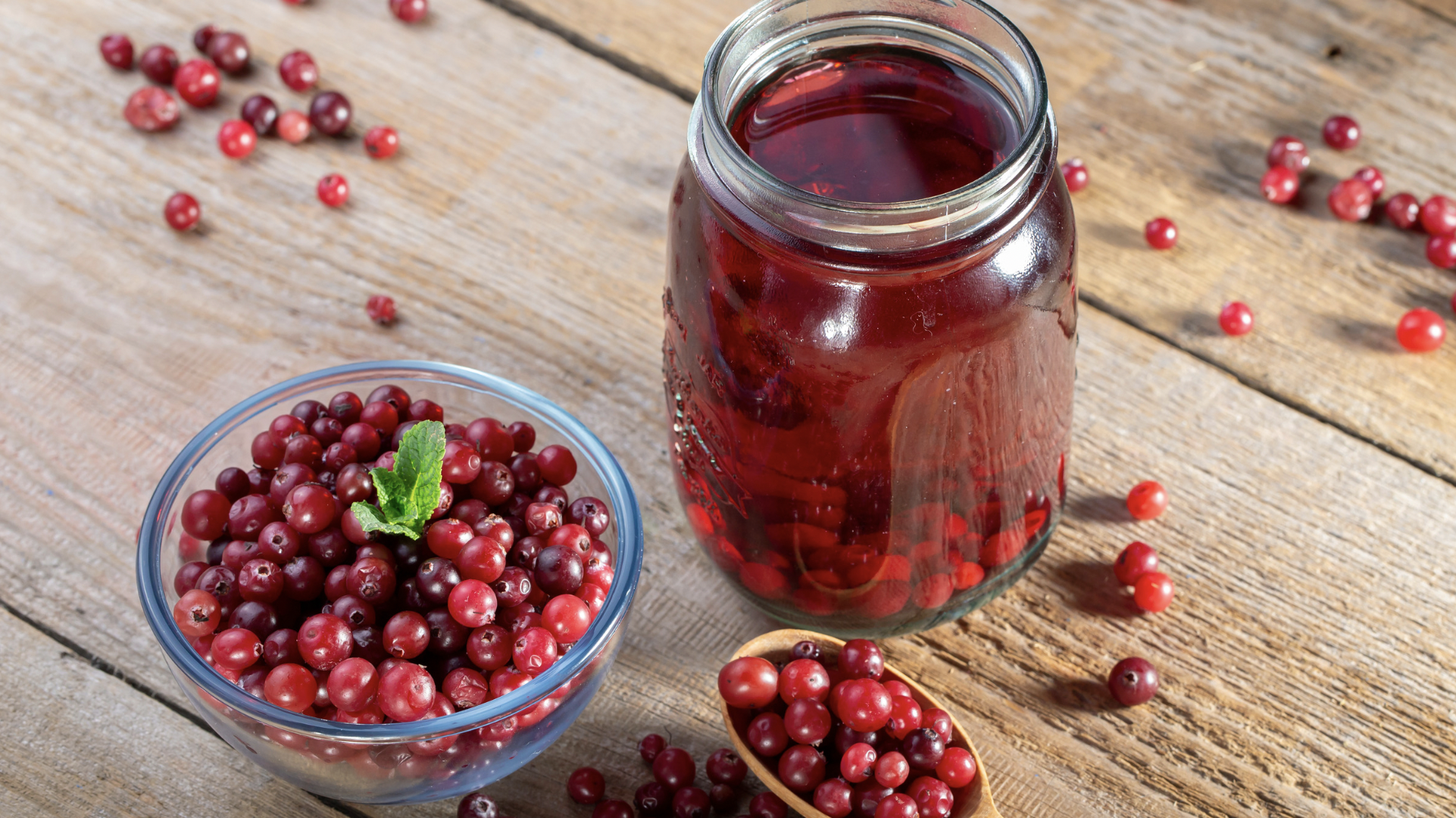Cranberries (Vaccinium macrocarpon)
Medicinal Profile of Cranberries
(Vaccinium macrocarpon)
Cranberries are small, tart berries native to North America, long used as both food and medicine by Indigenous peoples and later integrated into Western herbal practice. Traditionally, they were eaten fresh, dried, or as a mash to treat bladder and kidney conditions. Modern research has confirmed their role in urinary tract health through compounds that prevent bacterial adhesion, particularly E. coli. Beyond the urinary system, cranberries offer antioxidant protection, support cardiovascular health, and provide astringent, cooling effects that balance heat and dampness in the body.
-
👉 Tastes describe the initial impression a food or herb leaves on the tongue, and they reveal its deeper actions in the body, shaping digestion, circulation, and tissue response.
Sour (citrusy) – Stimulating and cooling; sparks salivation, clears heat, and awakens digestion.
Astringent – Drying and contracting; tones tissues and reduces excess fluid or discharge.
Bitter (subtle undertone) – Light detoxifying effect; supports liver and bile function.
-
👉 Qualities describe the felt nature of a substance or practice, and how it acts in the body beyond nutrients or chemistry.
Cooling (Stabilizing) – Reduces heat, irritation, and inflammation.
Drying – Contracts tissues, reduces dampness and discharge.
Light – Easily digested, not heavy on the system.
Clear – Helps flush the urinary tract and prevents buildup of pathogens.
-
👉 Affinities describe which organ systems or tissues a food most directly influences, showing where its actions are felt most strongly.
Primary Affinities
Urinary System – Prevents bacterial adhesion in bladder/kidneys, supports healthy urinary flow.
Digestive System – Astringent effect tones gut lining, sour taste stimulates digestion.
Secondary Affinities
Circulatory System – Antioxidants support vascular health and reduce oxidative stress.
Integumentary System (Internal) – Indirectly supports skin by reducing systemic inflammation and microbial load.
-
👉 Terrain patterns describe the body’s functional state, showing when a food or herb is most helpful or aggravating.
Primary: Fluid Congestion (Damp/Stagnation) – Excess fluids, discharge, or microbial overgrowth (e.g., urinary infections).
Form & Application: Unsweetened juice, dried cranberries, or whole berry preparations to dry dampness and flush the urinary tract.
Dose: ½–1 cup fresh cranberries, or ½ cup unsweetened juice daily.Secondary: Hyperreactivity (Heat/Irritation) – Inflammation or irritation in urinary/digestive tracts.
Form & Application: Cranberry juice or capsules for cooling, anti-adhesive effects.
Dose: ¼–½ cup unsweetened juice, 1–2x daily. -
👉 Constituents are the natural compounds in a food that give rise to its actions in the body.
Proanthocyanidins (A-type) – Prevent bacterial adhesion in the urinary tract.
Anthocyanins – Antioxidant, anti-inflammatory.
Flavonoids (quercetin, myricetin, kaempferol) – Cardioprotective, anti-inflammatory.
Organic acids (citric, malic, benzoic) – Antimicrobial, contribute to sour taste.
Tannins – Astringent, antimicrobial.
Vitamins – Vitamin C, Vitamin E, Vitamin K1.
Minerals – Manganese, copper, potassium.
-
👉 Nutritional values give the measurable nutrients that a food contributes to the diet.
(per 1 cup raw cranberries, ~100 g)
Calories: ~46, Carbohydrates: ~12 g, Fiber: ~4.6 g, Sugars: ~4 g (naturally low sugar fruit), Protein: ~0.4 g, Fat: ~0.1 g, Vitamin C: ~14 mg (~24% DV), Vitamin E: ~1 mg (~5% DV), Vitamin K1: ~5 mcg (~5% DV), Manganese: ~0.4 mg (~18% DV), Potassium: ~80 mg
-
👉 Medicinal actions describe the specific ways a food influences organ systems and body functions.
Urinary System
Anti-adhesive – Proanthocyanidins prevent bacteria (especially E. coli) from attaching to urinary tract walls.
Diuretic support – Promotes urinary flow and flushing of pathogens.
Antimicrobial – Organic acids and tannins resist bacterial growth in the urinary tract.
Digestive System
Astringent – Tones gut lining, reduces excessive discharge, and tightens tissues.
Anti-inflammatory – Reduces irritation in gastric and intestinal mucosa.
Circulatory System
Antioxidant – Polyphenols protect blood vessels from oxidative stress and inflammation.
Cardioprotective – Supports healthy cholesterol balance and vascular function.
Integumentary System (Internal)
Anti-inflammatory – Reduces skin flare-ups indirectly by lowering systemic inflammation and microbial burden.
-
Moderate – Noticeable systemic effects when consumed regularly (juice, whole berries, capsules); stronger in concentrated extracts.
-
Anticoagulants (e.g., warfarin) – May increase bleeding risk by enhancing blood-thinning effect.
Nephrolithiasis (kidney stones) – High intake may increase oxalate load; use cautiously in individuals prone to stones.
General – Safe in food use; caution with long-term high-dose supplements.
-
Juice (unsweetened) – Traditionally used for urinary tract support.
Whole fresh or dried berries – Consumed as food, sauce, or added to dishes.
Capsules / standardized extracts – Concentrated for urinary health.
Infusion (tea) – Less common, but cranberries can be steeped for a tart, astringent tea.
-
Dry / Atrophy terrain – May aggravate dryness in already depleted constitutions if overused.
Kidney stone risk – High intake may increase oxalate levels, contributing to stone formation.
Medication interactions – Use caution with anticoagulant therapy (e.g., warfarin).
Children – Safe in moderate food amounts; avoid sweetened cranberry juice due to sugar content.
-
Moerman, D. E. (1998). Native American Ethnobotany. Timber Press. (Cranberry used traditionally for urinary conditions and as food.)
Foster, S., & Duke, J. A. (1990). A Field Guide to Medicinal Plants. Houghton Mifflin. (Notes cranberry as a urinary antiseptic and astringent.)
Modern Sources
Howell, A. B. (2002). “Cranberry proanthocyanidins and the maintenance of urinary tract health.” Critical Reviews in Food Science and Nutrition, 42(3), 273–278.
Blumberg, J. B., Camesano, T. A., Cassidy, A., et al. (2013). “Cranberries and their bioactive constituents in human health.” Advances in Nutrition, 4(6), 618–632.
Jepson, R. G., Williams, G., & Craig, J. C. (2012). “Cranberries for preventing urinary tract infections.” Cochrane Database of Systematic Reviews, Issue 10.
USDA FoodData Central. (2024). Nutrient data for raw cranberries. U.S. Department of Agriculture.



